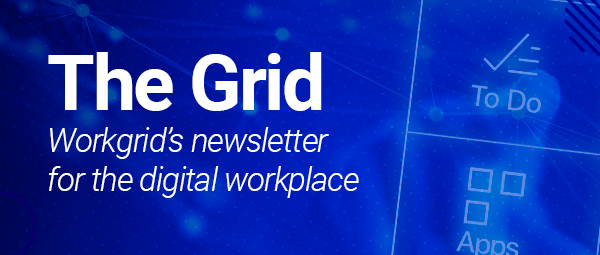There’s an insidious threat that’s attacking organizations from within – probably even your organization, right at this very minute. It’s destroying your employee experience strategy by cutting the time employees have to spend on meaningful work by as much as 80% and it’s a critical factor in why 51% of employees are not engaged and a startling 16% are actively disengaged (a statistic that costs businesses between $450-$550 billion every year, by the way).
![[asset] context-switching-chart](https://images.ctfassets.net/z7p73u8c0thn/2Gm2yJhPjyC1vJvQuQU7nS/0707ed7289b4eed1f092ee7d710bf700/contextswitchngchart.png?w=1200&h=649&q=60&fm=png&bg=transparent)
This threat is called “context switching,” although you might know it by the more popularized term of “multi-tasking.”
Now multi-tasking has become something of a badge of honor with people who are universally faced with way too much to do and not enough time to do it in. We’re all guilty of it, frankly, priding ourselves on our ability to do a million things at once (while also obsessively checking social media of course), and we brag about how efficient and effective we are. But the reality is, it’s all just an illusion. According to science, multi-tasking is not possible for 97.5% of the population. Here’s why, according to Chris Adams, human factors engineer:
"The human brain cannot perform two tasks that require high-level brain function at once… The cerebral cortex handles the brain's "executive controls." Those controls, divided into two stages, organize the brain's tasks processing. The first is goal shifting. This happens when you switch your focus from one task to another. The second stage is rule activation. This turns off the rules (how the brain completes a given task) for the previous task and turns on the rules for the new task. So, when you think you are multitasking you are actually switching your goals and turning the respective rules on and off in rapid succession. The switches are fast (tenths of a second) so you may not notice them, but those delays and the loss of focus can add up "
Chris Adams, Human Factors Engineer
So even if we’re multi-tasking effectively, our brains are still essentially operating like railroad switches, redirecting our thoughts to different tracks as we move back and forth between various tasks. It’s hardly a streamlined process, but now let’s think about the concept as it relates to the business environment.
Employees, as individuals, already come to the table carrying their own multi-tasking burdens. When you add the complexity of the corporate environment on top of that, things get messy quickly…
According to Symantec, it’s not uncommon for organizations to support 928 different applications
The average employee can lose up to one hour every single day, just toggling back and forth between all the applications they need to do their job – and that doesn’t factor in all the time lost getting interrupted countless times by email, messaging apps, meetings etc.
Deloitte estimates that 72% of employees can't efficiently find the right information they need within corporate systems
The bottom line to all of this is that your employees are unable to be effective at their jobs because they’re juggling too much stuff, not the least of which is the fact that they have too many places to go to find information and complete common tasks. That news is bad enough, but consider this – the unemployment rate is at an all-time low. Workers are in control and can choose where they want to work. That makes retaining employees a challenge and attracting the best new talent even more difficult.
So what do you do to fix it?
On the surface it feels like a little bit of a conundrum. How do you fix a productivity issue that at its core is digital friction caused by the very technology you implemented to help employees be more effective in the first place? Thankfully the answer is simple -- by implementing a digital experience layer.
Typically organizations take a very similar approach to delivering a digital employee experience to their workforce – the roll out best-in-class solutions to serve the needs of specific functional groups, such as HR, IT and Finance, then everyone dusts off their hands and considers the job done. But there’s a critical flaw with that approach. While each individual experience is excellent, the overall employee experience is a fragmented one because workers are forced to switch back and forth among numerous applications over the course of their day.
A digital experience layer eliminates that issue because it creates a single unified and contextual experience that exists above the technological complexity of an organization. It reduces the cognitive load (and therefore the context switching) on employees by orchestrating across all important systems on the employee’s behalf, seamlessly abstracting only the critical information each employee needs to know or act on. It then presents that information in a streamlined experience that mimics the consumer experiences employees have become accustomed to (Liberty Mutual Insurance has actually implemented a great example of a digital experience layer to their global workforce of 55,000+).
![[asset] Workgrid Layers](https://images.ctfassets.net/z7p73u8c0thn/5jEJYG1f8luk3tMyElfLwx/4ec2c7b80e08b47297545e1163bf7926/AES_Blog_Layers.jpg?w=1200&h=675&fl=progressive&q=60&fm=jpg&bg=transparent)
Now before you panic, creating a digital experience layer isn’t something you need to take on yourself (you shouldn’t even try, really). There are technology firms out there that specialize in exactly this kind of thing, who have a proven track record for delivering effective and even award-winning digital experiences that reduce the havoc that context switching can have on your business.
So find a partner and get going! Gartner ranks employee experience as a top three priority for HR leaders , so now is the time to make sure you’re creating an employee experience that delivers bottom line value to your business.




